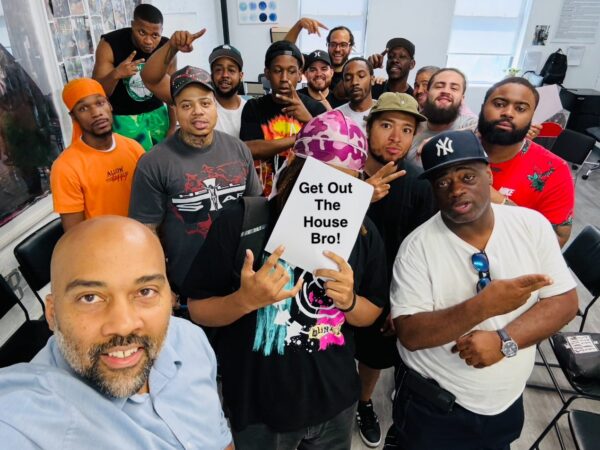by Matt Sherman
The lesson I came in to teach was tossed out the window before I even referred to my lesson plan. That day, the classroom became a battleground of truth, where scripted agendas crumbled under the weight of raw humanity. I was reminded, yet again, that I am not there to control the room. I am there to witness it, to honor it. A teacher? No. A facilitator. A conduit for the Art of Soulmaking.
This is what happens at Exodus. I come in with a plan, and the participants remind me: be here now. Be real. These men, society’s forgotten, turn the tables and become the teachers. They pull lessons from pain, philosophy from pressure, and liberation from their experiences with incarceration and a life “at risk.”
Finius, a young man on house arrest, walked in with The Will to Power under his arm.
Nietzsche’s ideas coursed through his conversation like electric current, but he also recognized how the will could land him in this place. A first-time offender, I was unsure of the crime that landed him that ankle monitor, but make no mistake, he is creating. He got his food handler’s permit with us through Free Food Harlem. He built a music mentorship program to inspire his younger brother’s friends to excel in school. He’s using every sliver of freedom granted to expand his world beyond his front steps.
Then came the unexpected: artificial intelligence. Not from my lips, but from the students. One participant spoke about how his kids were using AI for therapy. Not just for quick answers or entertainment, but for comfort. For guidance. They turned to machines to process their pain, where once they might’ve turned to absent parents or streets that only offered concrete lessons. It was a revelation. One I would’ve never seen if not for the space these men opened up.
The class shifted again when “Mr. Biggs,” facing twelve to life, exploded in frustration.“How is this gonna help me? I need a job. Nobody gets it!” Tension rose.
Then, honesty broke through the static. Ramil, quiet and thoughtful, admitted he felt worse from the class. “I feel stuck. I sit at home with my dog. I can see my potential, but I can’t move.” Isolated in his home. Head spinning on problems like a snake eating its tail.
Silence fell. Then, Avery pointed his finger at Ramil and spoke: “I get you.”
Let me rewind. At the beginning of class we do a round of check-ins. A weather report of sorts to see how everyone is feeling. When we got to a young man named Avery, a stylish young man with the flair of Busta Rhymes, green dreadlocks, a purple sweat suit, he, with a very stoic, almost murderous face said “I’m an introvert.” He ignored everyone’s attempt to connect. Some guys complimented his attire, his backpack, but nothing. Would not even make eye contact. I asked him if he wanted me to stop asking him questions.
“Yes,” he replied. I moved on. Ok, back to the moment at hand. Avery sat silent all class. Watching. Listening. Then he spoke to Ramil with the calm fire of someone who’s been there.
“Get out the house, bro,” he said. A message so simple. Whether it’s the brick-and-mortar one or the mental one you’re trapped in. Move. Step outside. Break the spiral. Suddenly, the room transformed. Ramil sat straighter. Mr. Biggs cracked a smile. That one sentence, simple, defiant, liberating, the lesson of the day, lit the room like sunlight.
“Get out the house.”
Spring has hit New York City. And I carry that message with me like scripture. These men reminded me: no matter the weight of the pressure, whether legal or mental, we are free to choose movement. Free to seek connection. Free to live. Unconditionally.
So I say it again, in the spirit of Avery, in the spirit of Exodus: “Get out the house.”
Matt Sherman is an Unconditional Freedom program manager and class facilitator. With a background in arts, communications, and event management, he loves teaching, writing, and creating experiences that focus on connecting people to opportunities for discovering purpose, value, and flourishing.

 Get access to the monthly Rehumanization Magazine featuring contributors from the front lines of this effort—those living on Death Row, residents of the largest women’s prison in the world, renowned ecologists, the food insecure, and veteran correctional officers alike.
Get access to the monthly Rehumanization Magazine featuring contributors from the front lines of this effort—those living on Death Row, residents of the largest women’s prison in the world, renowned ecologists, the food insecure, and veteran correctional officers alike.